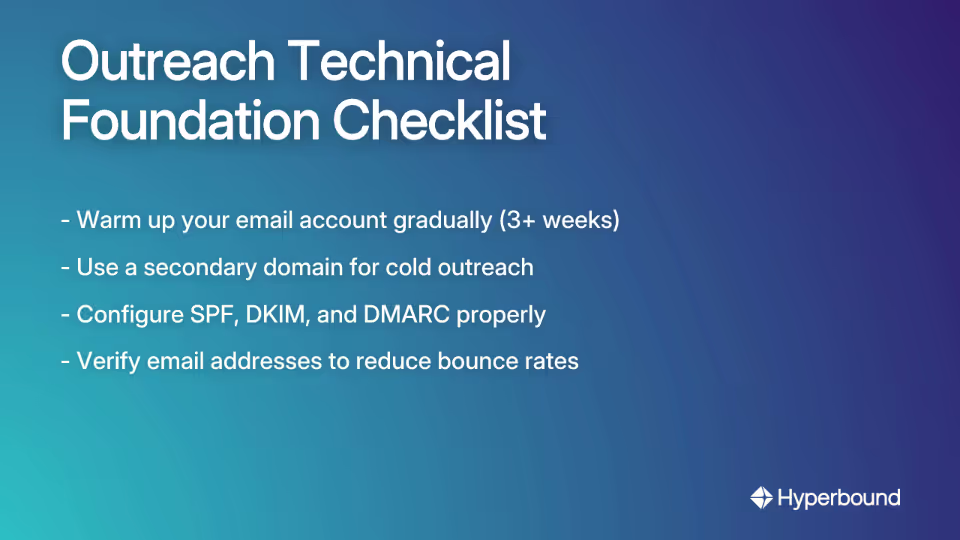
You're staring at your screen, cursor blinking in the same spot for the last 20 minutes. Is "Looking forward to connecting" too desperate? Maybe "I'd love to chat" sounds more approachable? Wait—should you mention their recent LinkedIn post in the first paragraph or the second?
Meanwhile, your outreach quota looms overhead, your calendar remains empty, and that pipeline you promised your manager? It's as dry as week-old bread.
This cycle of overthinking, practicing in your head, and still feeling unprepared is exactly why reps are turning to AI role-play: to build real confidence before they ever hit "send" or "dial."
Sound familiar?
Here's the uncomfortable truth: That perfect cold email you're crafting doesn't exist. The immaculate talk track you're fine-tuning is a mirage. And every minute you spend agonizing over syntax is another minute you could have spent actually connecting with prospects.
The Perfectionism Trap That's Killing Your Sales Pipeline
Let's be brutally honest. Your cold outreach probably does suck right now. But not for the reasons you think.
It sucks because you're paralyzed by perfectionism. As one sales rep confessed, "I wasted a lot of time tweaking one word in my talk track or A/B testing emails... Making 20 extra dials is more effective than agonizing over syntax." (Reddit)
This obsession with crafting the "perfect" message is costing you:

- Time: Hours spent wordsmithing could be hours spent connecting
- Opportunities: While you're tweaking, your competitors are talking to your prospects
- Learning: You can't improve what you haven't tested in the real world
Think of it this way: Han Solo is beloved not because he's flawless, but because he's authentic, flaws and all. The same principle applies to your outreach. Studies show that 89% of people believe a business can regain trust if it's transparent about mistakes. (Caldwell Chamber)
Remember Domino's Pizza's turnaround? They didn't perfect their pizza in secret—they publicly admitted it was terrible and showed how they fixed it. Sales skyrocketed because authenticity beats perfection every time.
The "Good Enough" Outreach Blueprint: What Actually Works
Let's shift from problem to solution. Here's a practical framework that prioritizes impact over polish—because finished is better than perfect.
Pillar 1: Research Over Guesswork (The 15-Minute Prospect Deep Dive)
Generic "spray and pray" approaches yield dismal results—typically less than 1% success rates. (Reddit)
Instead:
- Define your buyer persona: Stop trying to sell to everyone. Know exactly who you're targeting.
- Use LinkedIn strategically: Before contacting, spend 5-10 minutes on their profile. Look at their recent posts, shared content, and company announcements.
- Align with their goals: "Decision makers don't wake up thinking about your product category. They wake up thinking about hitting targets." (Reddit) Frame your outreach to show how you'll help them achieve their objectives.
Pillar 2: Personalize with Purpose, Not Platitudes
The "Hi {first_name}!" approach isn't personalization—it's the bare minimum. Studies show that truly personalized emails can increase response rates by 100%. (Skylead)
Do this instead:
- Show 'Em You Know 'Em: Reference something specific from your research. "I noticed you shared an article about supply chain disruptions last week—that resonated with what we're seeing among our manufacturing clients."
- Lead with value: Instead of asking for 15 minutes of their time (which benefits you, not them), offer something useful first. This could be a relevant case study, an insightful article, or a novel perspective on a challenge they're facing.
- Address their pain points directly: "Based on your recent expansion announcement, I imagine you're dealing with the challenge of scaling your customer service team while maintaining quality..." This shows you understand their world.
Pillar 3: Structure for Skimmability (Not a Novel)
Your prospects are busy. They're not settling in with a cup of coffee to savor your email like a good book. They're scanning it for 5-7 seconds to decide if it's worth their time.
Make those seconds count:
- Keep it concise: Aim for 100 words or less. Respect their time. (Saleshandy)
- Use a proven framework:
- BAB (Before - After - Bridge): Describe their current state, paint a picture of a better future, and show how your solution bridges the gap.
- PAS (Problem - Agitate - Solve): State a known pain point, elaborate on why it matters, and present your solution.
- One clear CTA: Don't confuse them with multiple asks. Have a single, clear call-to-action.

Building Your Imperfect-but-Effective Outreach Machine
Now that you understand the core principles, let's build a system that lets you focus on execution rather than endless tweaking.
The "Do It Once" Technical Checklist
Get these foundational elements right from the start to avoid deliverability headaches:

- Warm-Up Your Email Account: Don't blast cold emails from a new account. Warm it up for at least three weeks by gradually increasing volume and engaging in natural email behaviors.
- Use a Secondary Domain: Protect your primary domain's reputation. Send cold outreach from a similar, secondary domain (e.g.,
getcompany.cominstead ofcompany.com). - Set Up Authentication Records: Configure SPF, DKIM, and DMARC properly. This isn't optional if you want to avoid the spam folder.
- Clean Your Email List: Verify email addresses before sending to reduce bounce rates, which can damage your sender reputation.
The Follow-Up Imperative
Here's a statistic that should change how you think about outreach: A single follow-up can increase reply rates by over 44%. (CopilotAI)
Yet most salespeople give up after one attempt. Don't be most salespeople.
A simple follow-up plan:
- If they didn't open: Your subject line failed. Try a completely different angle.
- If they opened but didn't reply: Your value proposition wasn't compelling enough. Reiterate the value or approach from a different perspective.
- Use a multi-channel approach: Don't just rely on email. Combine it with a LinkedIn connection request or a cold call as part of your sales cadence to reach prospects where they're most active.
Measure to Improve, Not to Paralyze
A/B testing is essential—but not if it prevents you from taking action. Here's how to test effectively without falling into the perfectionism trap:
- Test big elements: Focus on testing major components like different value propositions or subject line strategies, not individual words.
- Track key metrics: Monitor open rates, reply rates, and close rates to understand what's working, but review them weekly—not after every send.
- Lead qualification: Pay attention to which types of prospects engage most with your outreach to refine your ideal customer profile over time.
The Action Plan: Start Now, Perfect Later
Your cold outreach might suck right now. Good. That means you've started. Now use this framework to make it better each day:
- Stop tweaking, start doing: Commit to sending 5 "good enough" outreach attempts today, even if they're not perfect.
- Focus on the fundamentals:
- Research your prospects (15 minutes max per prospect)
- Personalize with purpose (reference something specific)
- Keep it concise and skimmable
- Build your system:
- Set up your technical foundation correctly
- Create a simple follow-up sequence
- Develop a consistent review process to handle objections and improve over time
- Embrace rejection as data: Every "no" is information you can use to refine your approach. The best sales professionals don't avoid rejection—they learn from it, turning insights into better performance by practicing for tough conversations in environments like AI role-plays.
Remember: Perfect outreach never sent converts exactly zero prospects. Imperfect outreach actually delivered has a chance.
As you navigate the sales funnel, you'll find that warm leads generated through consistent, authentic outreach are far more valuable than theoretical perfect pitches that never see the light of day.
Take Action Now
Go find one prospect right now. Spend 10 minutes researching them on LinkedIn. Write a "good enough" 3-sentence email based on what you find and hit send. That's your first step toward better outreach.
Then do it again. And again. Each time, you'll get better at identifying pain points, crafting value propositions, and closing the deal.
Your future pipeline will thank you for the imperfect action you take today.
Because in sales, as in life, finished is better than perfect.

Frequently Asked Questions
Why is perfectionism in sales outreach a problem?
Perfectionism is a problem because it leads to inaction, which is the biggest enemy of a healthy sales pipeline. It causes reps to waste valuable time agonizing over minor wording choices instead of connecting with prospects. This "perfectionism trap" prevents you from gathering real-world feedback and allows competitors to engage with your potential customers while you're still stuck in draft mode.
What is the "good enough" outreach framework?
The "good enough" outreach framework is a practical, three-pillar approach focused on Research, Purposeful Personalization, and Skimmable Structure. It prioritizes taking effective action over achieving theoretical perfection. This involves a quick (10-15 minute) research dive into your prospect, personalizing your message with specific insights, and keeping your email concise (under 100 words) and easy to read.
How much time should I spend researching a prospect?
You should aim to spend around 10-15 minutes researching a prospect before your initial outreach. The goal isn't to write a detailed biography but to find one or two specific, relevant details that you can use as a hook. Look at their recent LinkedIn posts, company news, or professional background to find an angle that aligns your message with their current challenges or goals.
What is the best way to follow up without being annoying?
The best way to follow up is by adding new value with each message and using multiple channels. Instead of just "bumping" your last email, offer a different insight, share a relevant case study, or reference a new piece of company news. Combining email with a LinkedIn connection request or a call makes your outreach more visible. This approach shows persistence while respecting their time by making each touchpoint valuable.
How can AI help improve my sales outreach skills?
AI can significantly improve your sales outreach by providing a safe, repeatable environment for practice. Tools like AI role-play simulators allow you to practice handling objections, refining your value proposition, and testing different talk tracks without risking real opportunities. This builds the confidence and muscle memory needed to move past the fear of imperfection and engage authentically with prospects.
What is a simple yet effective structure for a cold email?
A simple and effective structure is the PAS (Problem - Agitate - Solve) or BAB (Before - After - Bridge) framework. The PAS framework states a known problem, explains its negative impact (agitates), and then presents your solution. The BAB framework shows the prospect's current state (Before), paints a picture of a better future (After), and positions your product as the Bridge. Both are designed to be easily skimmable and convey value quickly.
Book a demo with Hyperbound
.png)













